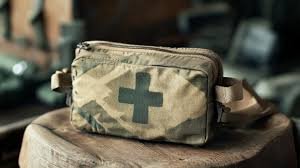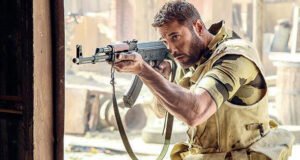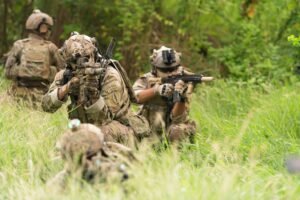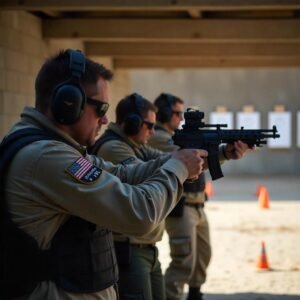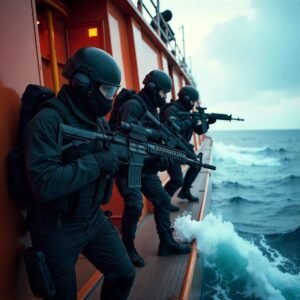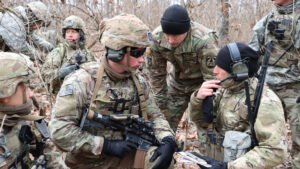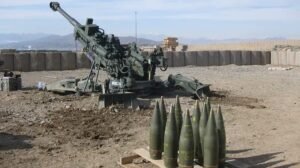In February 2013, an incident occurred involving a police officer in New Orleans, USA. Officer Passaro responded to a report of a robbery at a grocery store around 7:00 PM. The information provided to him was vague and incomplete—he didn’t know whether the store itself or an individual inside was robbed, whether the suspect was still present or had already fled, or if the suspect was armed.
Upon arrival, Officer Passaro observed no one inside the store. Backup was on the way, but he decided to enter alone. Once inside, he noticed the place appeared empty, with the manager’s office door closed. As he approached the door, he announced his presence loudly as a police officer. At that moment, the suspect opened fire from behind the door, critically wounding Passaro before fleeing the scene. Fortunately, backup arrived seconds later and managed to save his life.
At the time, it was unclear how exactly the officer responded inside the store—whether he had drawn his weapon, for example. Initial reports blamed the vague dispatch information, which was partially valid. Had Officer Passaro known the robbery was actively in progress or the suspect was armed and still inside, he might have waited for backup or approached with greater caution. Naturally, the more accurate and complete the information, the better and more appropriate the response.
However, when we analyze this incident through the lens of combat profiling and situational awareness, we shift the focus. We are not here to assign blame to the officer or claim negligence. He was not at fault for being shot; the criminal was, for committing an illegal act. But tactically, analyzing this scenario is crucial for extracting lessons.
From a tactical standpoint, had the officer taken cover while moving or approached the door at an angle rather than standing in front of it directly, the outcome could have been different.
From a psychological perspective, the key question becomes: What was the officer’s mental readiness and awareness level? Was he mentally prepared to respond with deadly force even without confirming if the threat was still present? Or was he unprepared to escalate to lethal force?
According to Colonel Jeff Cooper, the ability to mentally commit to using lethal force when necessary can be the difference between life and death. Cooper developed a mental awareness system known as the Cooper Color Code, which classifies levels of psychological alertness into four color states:
Cooper Color Code
- White – Unaware and Unprepared
The person is in a relaxed state with low situational awareness and psychological arousal. If attacked, they will be caught off guard and are likely to become a victim. They believe there is no threat to their safety and are not actively observing their surroundings. Their response will be purely reactive.
- Yellow – Relaxed Alert
The person is aware that threats may exist and is psychologically prepared to respond. They actively observe their environment for potential threats. Both their awareness and arousal levels are moderate. Once a specific threat is identified, they transition to Orange.
- Orange – Focused Alert
The individual focuses on a specific threat and begins planning a course of action. Their awareness slightly narrows due to attention on the identified threat, while arousal increases. This is where a tactical plan for engagement begins forming. The person prepares mentally for the potential of a deadly encounter.
- Red – Engagement Mode
This is the mental state where lethal force is authorized and the plan formed in Orange is executed. Awareness narrows significantly to concentrate on the threat, while psychological arousal is very high. In this state, cognitive processing is reduced, and focus is solely on survival and mission execution.
USMC Addition – The Black Zone
The U.S. Marine Corps later added a fifth state: Black. This represents a state of mental and physiological breakdown, typically when heart rate exceeds 175 bpm. At this level, the individual loses situational awareness, cannot process information effectively, and experiences a “shutdown” or freeze response.
Tactical Application of Color Codes
Anyone concerned with personal safety should maintain a Yellow State at all times—alert, scanning for threats, and mentally prepared to act. The principle of combat profiling recommends that individuals remain mentally and psychologically ready to respond decisively.
Returning to Officer Passaro’s case: the lack of clear intelligence should not have been the decisive factor in his mental readiness. Any officer responding to an active call should assume the possibility of an armed suspect, regardless of available information. The fact that backup was en route or that the call sounded routine should not have reduced his state of awareness.
He likely defaulted to the assumption that this incident would go like many others—routine and non-lethal. This contradicts the core principle of tactical readiness: assume every encounter is potentially dangerous and stay mentally and physically prepared to take immediate action.
Re-Engineering the Tactical Toolkit
Military, law enforcement, and security personnel often operate in hostile, dynamic environments where decisions must be made under pressure and in limited time. They are not only required to identify threats but also to apply Rules of Engagement (ROE) and Escalation of Force (EOF) measures. This includes positive identification of the threat before using force.
While these procedures are designed to aid operational decision-making, in reality, many personnel find them restrictive and difficult to apply under life-threatening conditions. The stress of protecting oneself and fellow team members while complying with ROE can become overwhelming.
In combat or crisis scenarios, some personnel make poor decisions leading to failure or legal consequences, while others respond with exceptional judgment, intuition, and tactical intelligence.
The Role of Intuition in Tactical Decision-Making
The challenge is: these reactions are often not the result of structured training but rather personal background and real-life experience. Individuals raised in difficult or dangerous environments often develop a “thick folder” of life experiences and intuitive patterns (sometimes humorously compared to someone growing up in the tough streets of Shubra, Cairo 😄). These help form instinctive responses under stress.
Intuition is not magic—it’s a pattern recognition system shaped by experience. It’s the mind’s way of quickly processing scenarios using accumulated knowledge and prior exposure.
Conclusion:
Training must bridge this gap by building intuitive frameworks for those without natural exposure to high-stress environments. Through scenario-based training, mental conditioning (using Cooper’s Color Code), and tactical debriefing of real-world incidents like Officer Passaro’s, individuals can develop readiness and intuitive capability needed to survive and respond effectively.

